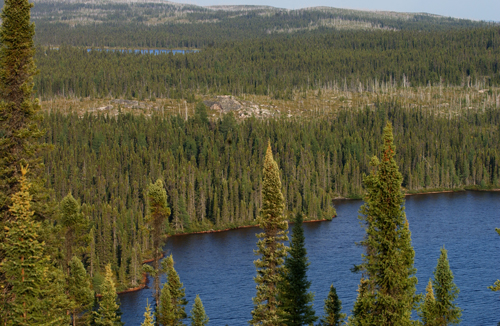![“The [IBCSP's] report is trying to get people to think about different ways of doing two main things,” says Nigel Roulet. “One is preserving enough land in the areas that are pressure points. And, secondly, how do you manage the land, both in terms of ecological principles and with the communities living in the north?"](https://reporter.mcgill.ca/wp-content/uploads/2013/10/nigel_roulet_c.jpg)
McGill’s Nigel Roulet part of international science panel calling for complete preservation of half of Canada’s boreal forests
When the International Boreal Conservation Science Panel (IBCSP) released Conserving the World’s Last Great Forests is Possible: Here’s How in July, the report earned a lot of media attention, including stories in the Globe and Mail, CBC News and the Vancouver Sun. The paper was an unequivocal call for Canada to ban development in half of its 5.8-million-square-kilometre boreal forests and wetlands, which arc from the Alaska-Yukon border to Newfoundland. With the 16th International Boreal Forest Research Association conference currently underway at the University of Alberta, the McGill Reporter checked in with Professor Nigel Roulet, one of the 13 scientists who make up the IBCSP, about why so much forest needs so much protection.
“Canada is unique in how much intact boreal forest we still have,” says Roulet, the James McGill Professor of Biogeoscience in the Department of Geography. “Our north is poorly developed compared to the Europeans. You’d be hard-pressed to find any original boreal forest in Sweden, for example. So we’re talking about the preservation and conservation of a natural resource, not a secondary or tertiary set of forest. Canada is ahead of the game here.”
Roulet says Quebec and Ontario already have some “very workable” provincial plans in place, “but they only cover 30 per cent of Canada’s boreal forest. The IBCSP plan is asking to extend those efforts right across Canada. By far the biggest pressure on the boreal right now comes from developments in northern Saskatchewan and Alberta. Right now, there is no over-arching notion about keeping the structural integrity of those ecosystems.”
The IBCSP, which is an initiative of the U.S. think-tank the Pew Charitable Trusts, is made up of senior scientists whose expertise includes ecology, biology and environmental studies. Roulet, who is also appointed to the Global Environmental and Climate Change Centre and is the former director of the McGill School of Environment, has spent thirty years studying how boreal ecosystems regulate carbon exchanges and methane exchanges with the atmosphere. “The big question for land use change is: What is the footprint of that development in terms of the consequence of the ecological functions that these ecosystems serve? Is it going to diminish carbon storage? Is it going to diminish the rate at which they take carbon up? Is it going to modify the hydrology of these ecosystems so that the carbon goes back into the atmosphere as carbon dioxide or will it go back as methane, which is a much more potent greenhouse gas in the short term?”

The IBCSP paper says that an absolute halt to development in half of Canada’s boreal forest is the only way to ensure that the land will continue to provide invaluable ecosystem services. This means no logging, no oil exploration, no mining. As for the rest of the forest, the IBCSP calls for careful stewardship to preserve — or, in the case of an industrialized stretch larger than Texas, restore — its ecological integrity. Any development, for example, would need to ensure that it doesn’t disrupt migration corridors of at-risk species including caribou, grizzly bears, wolverines and wolves.
“The report is trying to get people to think about different ways of doing two main things,” says Roulet. “One is preserving enough land in the areas that are pressure points. And, secondly, how do you manage the land, both in terms of ecological principles and with the communities living in the north? First Nations are an absolutely critical stakeholder. It is absolutely essential that people who live in those areas are engaged in this 100 per cent. It has to be a co-management, no question about it.”
“This is an affirmation of a landscape with global importance,” he adds. “This is what we think the science is, this is why we think it’s important, and this is how we think it should have implications for public policy. As scientists, we’re not competent to develop the policy. What we’re doing is getting the science out of the closet and into the public, where it can inform the decision-makers.”
